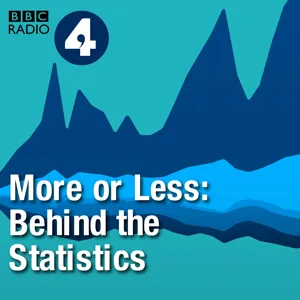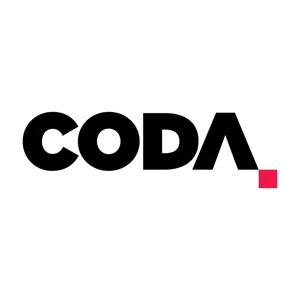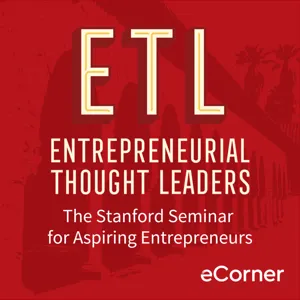Podcast Summary
The amount of water needed to produce clothes is debated: Producing clothes requires a significant amount of water, and the exact amount can vary depending on farming practices and manufacturing processes.
The amount of water required to produce a pair of jeans or a t-shirt is a commonly debated statistic, with various numbers being cited. The UN previously stated it takes 10,000 liters, but now displays 7,500 liters on their website. Other sources claim 7,000-500 liters or even 20,000 liters. The accuracy of these figures is subject to debate and can depend on various factors such as farming practices and manufacturing processes. Regardless, it's clear that producing clothing does require a significant amount of water, making it an important issue to consider in terms of sustainability and resource conservation. If you're interested in starting a weight loss journey, UnitedHealthcare's Health Protector Guard fixed indemnity insurance plans, underwritten by Golden Rule Insurance Company, can help manage out-of-pocket costs. And for those looking to lose weight, PlushCare offers online access to board-certified physicians who can prescribe FDA-approved weight loss medications. Remember, taking care of your health is important, and both of these resources can help you get started.
The exact amount of water used to produce a pair of jeans is debated: It takes between 7,000 to 29,000 liters of water to produce a single pair of jeans, but accurate figures require ongoing research and transparency from the industry
The production of jeans uses a significant amount of water, but the exact quantity is a subject of debate. The claim of 20,000 liters per pair, which originated from the WWF, has been debunked due to its removal from their website and the lack of concrete evidence to support it. Instead, the consensus is that it takes between 7,000 to 29,000 liters of water to produce a single pair of jeans, according to a 1999 WWF report. However, a figure of 10,000 liters, which comes from the Water Footprint Network, is also widely cited. This figure, while high quality, is outdated as it relies on data from as early as 1996. It's important to note that this figure includes all water associated with growing cotton, not just the water extracted from sources like groundwater or surface water. Elizabeth Klein, a journalist and researcher, has highlighted the importance of using verified data and independent research to establish accurate figures. Overall, the production of jeans requires a substantial amount of water, but the precise quantity is a complex issue that requires ongoing research and transparency from the industry.
Water Management in Cotton Production: Effective water management is crucial in cotton production to prevent waste and ensure sustainability, with global average water consumption being 7,500 liters per kilogram, but varying greatly depending on location and management practices.
Water management is crucial in agriculture, particularly in the production of cotton. Green water, or rainwater, is uncontrollable and used by farming to prevent waste. Gray water refers to the amount of water needed to clean polluted water, contributing to the overall water footprint. The global average water consumption for cotton is 7,500 liters per kilogram, but conditions vary greatly from sustainable and well-managed to water-stressed areas like Turkmenistan, where cotton uses over 10,000 liters per kilogram. However, it's important to note that water scarcity in these countries is not solely due to cotton production but also poor water management. For instance, Turkmenistan uses over 5 million liters of water per capita, four times the average US citizen's usage. Desertification and drying Aral Sea areas are major concerns. Cotton production faces challenges in water-scarce areas, but countries like those in Sub-Saharan Africa, where cotton is mostly rain-fed, have different challenges. Effective water management is essential to ensure sustainable cotton production and address water scarcity issues.
Cotton Water Usage Varies Widely: Sustainable water management is crucial in cotton production, with significant impacts on crops, drinking water, and groundwater resources.
The water usage in cotton production varies greatly from country to country, with some using as little as 17 liters per kilogram of lint in Brazil, while others, like Turkmenistan, use a staggering 13,696 liters. Elizabeth Klein's report emphasizes the importance of sustainable water management in cotton production, as the water sources used, known as blue water, can have significant impacts on other crops, drinking water, and groundwater resources. It's essential to remember that the total volume of water used doesn't paint the whole picture, and consumers often have a difficult time knowing where their cotton comes from. The report argues for responsible water management practices no matter where cotton is grown. Meanwhile, on a lighter note, join Yaya Toure, Gabriel, and Zaquani on the March of the Day, Africa top 10 podcast for some football-related discussions. And here's a fun fact: a crocodile can't stick its tongue out!
UnitedHealthcare: Flexible and Budget-Friendly Short-Term and TriTerm Medical Plans: UnitedHealthcare offers short-term and TriTerm Medical plans for individuals needing coverage between jobs or for longer-term needs, with access to a nationwide network and flexible terms
Regardless of life's uncertainties and changes, having health insurance is a constant necessity. UnitedHealthcare offers flexible and budget-friendly short-term and TriTerm Medical plans underwritten by Golden Rule Insurance Company. The short-term plans are ideal for individuals between jobs, coming off their parents' plan, or starting a full-time gig. They provide coverage for a month up to a year and offer access to a nationwide network of doctors and hospitals. The TriTerm Medical plans last nearly 3 years in some states, providing longer-term coverage. Despite advancements like chatbots becoming our new friends, the importance of health insurance remains unchanged. For more information on UnitedHealthcare's short-term and TriTerm Medical plans, visit uhonedot.com and uhone.com, respectively.






